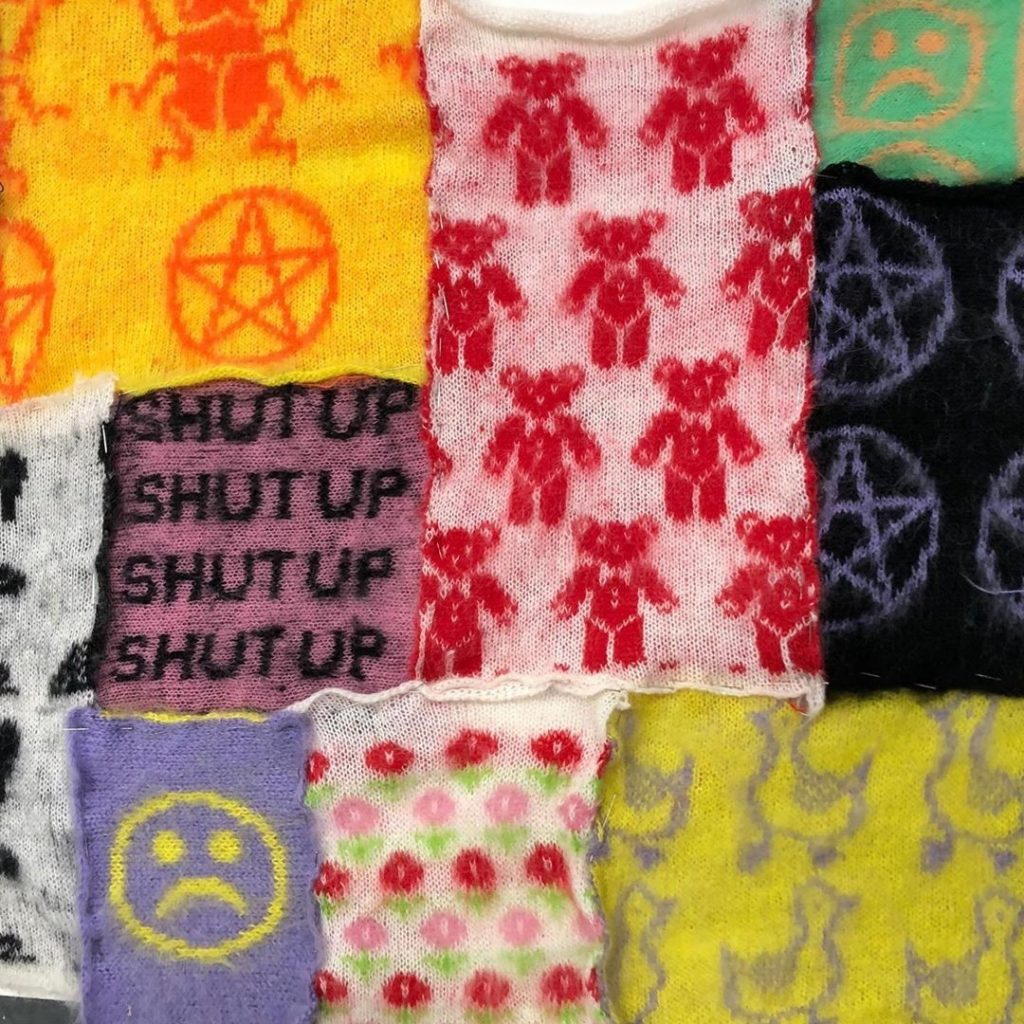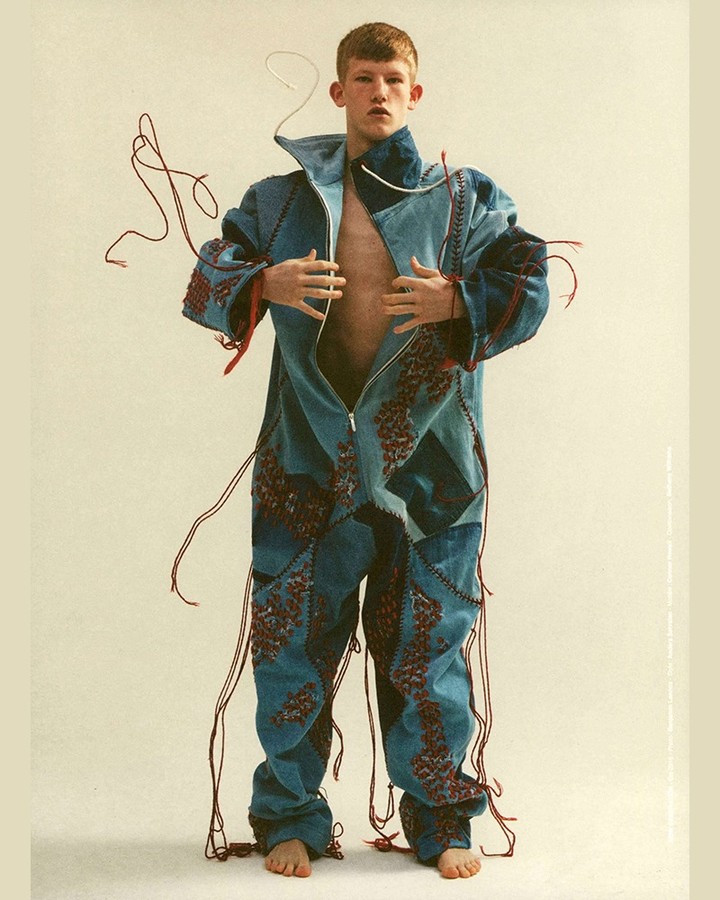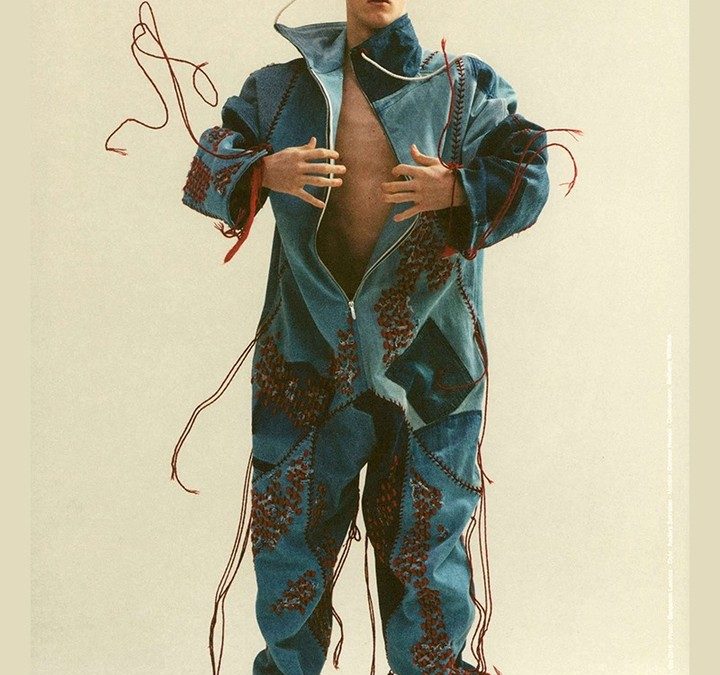- À New Wave to Fashion, À New Way of Living. Download Now on iOS Android Canada SS22
- hello@alahausse.ca
DIY Mending: Fashion Sustainability is in Your Hands

Microfiber Pollution: How Washing our Clothes is Polluting the Ocean
April 20, 2021
What are Retailers Planning to do with Excessive Inventory Pile Up from COVID-19?
April 27, 2021Let mending be part of your toolbox of sustainable fashion practices.

Written by: Priscilla Lam
To mend. Merriam-Webster defines this act as “to put into good shape or working order again; patch up; repair.” When we mend our clothes we are putting them back into use. Whether that’s patching a hole, fixing frayed hems, or reinforcing seams, mending prevents our clothes from going to the landfill by making them wearable again. Reducing waste? Now that’s a mark of sustainable fashion.
Before fast fashion, mending was done out of necessity. When materials were limited and clothing was expensive, mending was the way to go. For example, during World War II, the British government launched a “Make Do and Mend” campaign to encourage civilians to maintain their clothes in an effort to conserve materials for wartime uniforms. Leaflets circulated communities, teaching people clothing maintenance know-hows such as preventing moth damage and caring for different fabrics. With the limited possibility of buying new clothes, being able to mend and even re-style ones’ wardrobe became essential.
Enter Mass Manufacturing & Fast Fashion
Fast forward, after the war comes mass manufacturing in the garment-making industry. What resulted was what we know of as fast fashion today: abundant clothing that’s cheap and accessible. With fast fashion, the need to mend our clothes naturally dropped. Why spend time repairing a hole in our $4.99 crop top or fixing the zipper in our cheap faux leather shoes? Getting another one is just within our fingertips in a snap (thanks to the alluring ubiquity of online shopping).
So why mend today? Or another question: why even learn to mend today? #HAUSSEPEOPLE, as you know, fast fashion is harmful. Mending our clothes, effectively elongating its lifecycle, is a stand against fast fashion and its negative social-environmental impact. Making do with your existing wardrobe reduces your need to purchase new clothes, diverting your hard-earned dollars away from fast fashion companies. Consider these three reasons why mending should be part of your toolbox of sustainable fashion practices.
Learn the Value of Garment Making
Using your hands to mend your own clothes can help you gain an appreciation for all the work that goes into making it in the first place. Every time you repair instead of throw away, you are honoring the people who took the time to create it as well as the natural environment that produced the materials (think of all the water, land, and energy required in the process). Additionally, you may also find yourself loving your clothes more. The IKEA effect says we have the tendency to be attached to the things we build ourselves. As if clothing isn’t already supplying us with dopamine, mending it can bring us even more fashion happiness.


Prevent Fashion Waste Via Mending
Repair, revamp, and restyle is environmentally smart. Mending is a circular economy on the micro, individual level. It is how you can play your part in keeping clothes in a closed-looped system. Mending sits at the top of the waste hierarchy pyramid (prevent, reduce, reuse) meaning it is among the most effective ways to mitigate fashion’s environmental impact. It reduces the need for new clothes by reusing existing ones.
Get Your Money’s Worth
Not only is mending good for sustainability but it’s also good for your fashion budget. Extending the life of your clothes lowers its cost per wear. This means you’re getting more value from the clothes you buy. Small mending tasks for mini repairs is also economical as you won’t need to hire a tailor (though you may want to leave it to the pros for more sophisticated repairs).
Convinced? Join the Mending Movement
So, #HAUSSEPEOPLE, are you ready to get your hands handy? There’s two kinds of mending: visible mending and not-so-visible mending.
Visible Mending
Visible mending is a growing movement in the fight against fast fashion. Unlike traditional mending where the goal is make the repair as hidden as possible, visible mending makes the repair the star of the garment. For example: darning a sweater hole with brightly coloured threads, using a cute appliqué to cover stains (remember those 50’s poodle skirts?), or revamping the whole garment with interesting patchwork. With visible mending, you can turn your “ruined” clothes into statement pieces you’ll be proud to wear. It’s an opportunity to reclaim your individual power of your clothes — defining your personal, unique style.
Traditional Mending
Sometimes when you want to keep the original aesthetics of your clothes, you can practice traditional mending to keep the repair unnoticeable. Try opting for materials (threads, fabric, buttons, zippers) that are similar to the original. Either way, visible or invisible, getting started with mending will require some know-how. Don’t worry! It’s not as hard as you might think. A little knowledge in basic needlework is still enough to reap the benefits of mending. Here are our top mending skills to get acquainted with (sewing machine not required!):

- Hemming: Adjusting the hems of pants and shirts ensures good fit and allows us to be more comfortable wearing it. You can use basic stitches to get the job done or practice some fancier, decorative stitches.
- Seams: Split seams can be easily sewn together with a basic running stitch. If the split is in a place that is regularly stressed (ex. underarm seams, crotch points), you can try using stronger threads or stronger types of stitching to prevent future tears.
- Buttons: Lost a button somehow? No worries – it happens! Sewing a button is among the easiest mend to do. No fancy needlework needed to sew a new button on. You can also use this opportunity to pick out an interesting button to make the piece more eye-catching.
- Darning: Say goodbye to holey socks with the power of darning. Using a series of running stitches, darning is essentially weaving a patch with thread to cover holes. It does require some practice and patience but the results are so worth it (i.e. never needing to throw away your favourite pair of socks because of one hole).

How we value our clothes can really change how we consume fashion. Mending helps us define what our clothes mean to us. This redefinition of value can bring us one step closer to creating a future where enjoying fashion doesn’t come at the expense of the planet.
We at ÀLA.HAUSSE are committed to providing fashion lovers with a multifunctional ecosystem in which they can practice more sustainable consumption habits. Via ÀLA.HAUSSE‘s Multi-functional and Multi-purposeful Fashion Ecosystem- BUY/SELL/RENT/LEND/ (swap BETA 2021) mobile application, INDIVIDUALS & brands ( BETA 2021) are encouraged to REBUY, RESELL, REUSE and UP-CYCLE their personal “Clossets” aka Clothing Assets, along with overstock inventory and samples. Through this consumerism habit shift we indirectly slow down the urgency on fashion’s carbon footprint, aiding sustainability as a whole.
BETA Early Access Application Now Open for CA Fashion Lovers: Apply Now for LAST CALL
#ALAHAUSSE #WEARYOURPURPOSE #HAUSSEPEOPLE








